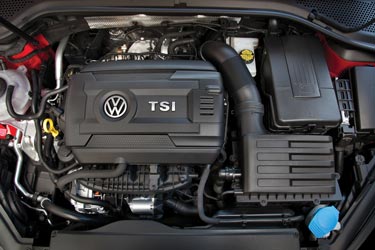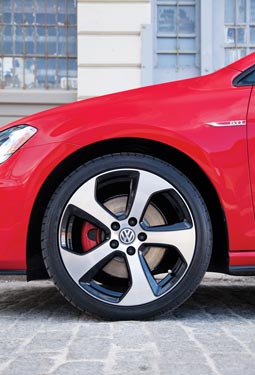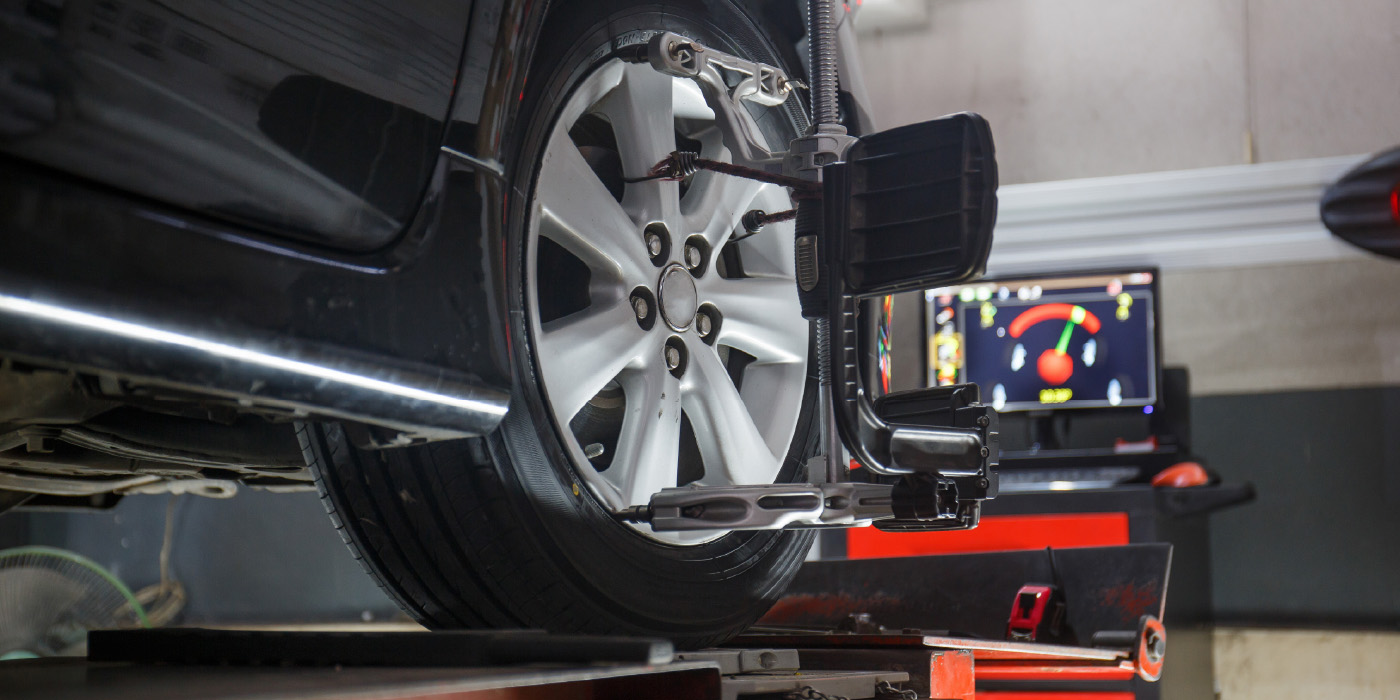The Seventh-generation Golf GTI is bigger, lighter, faster and more fuel-efficient than the previous generation, with increases in horsepower and torque as well as an improvement in fuel economy.
Engine
The Golf GTI features an EA888 2.0-liter turbocharged and direct- injection TSI engine that creates 210 hp and 258 lb.-ft. of torque, increases of 10 hp and 51 lb.-ft over the previous-generation GTI model. The new engine is designed to be both lighter than the old unit and reduce friction.
 Augmenting the EA888’s 16-valve, DOHC layout is the latest variable cam phasing system, which controls both intake and exhaust valves, as well as a variable lift system for the valves themselves. The single-scroll turbocharger feeds intercooled air through the aluminum-alloy crossflow cylinder head. Fuel is delivered by the latest high-pressure direct-fuel-injection system at 2,900 pounds per square inch, compared to 2,176 psi on the previous EA888 engine.
Augmenting the EA888’s 16-valve, DOHC layout is the latest variable cam phasing system, which controls both intake and exhaust valves, as well as a variable lift system for the valves themselves. The single-scroll turbocharger feeds intercooled air through the aluminum-alloy crossflow cylinder head. Fuel is delivered by the latest high-pressure direct-fuel-injection system at 2,900 pounds per square inch, compared to 2,176 psi on the previous EA888 engine.
The engine is also extremely compact, illustrated by the way in which the exhaust headers have been integrated directly into the cylinder head. This improves the system’s coolant operation.
As the first U.S.-market vehicle built on Volkswagen’s MQB modular platform, the new Golf GTI features an all-new body-in-white. The unitary construction chassis has two solid-mounted subframes with bolt-on front fenders.
The new Golf GTI features a strut-type front suspension with lower control arms and a multilink rear suspension, both of which are controlled by coil springs with telescopic dampers. The Golf GTI has a lowered sport suspension, which is 0.6 inches lower than the Golf TSI and TDI Clean Diesel models. The front suspension includes a 24-mm anti-roll bar, while the rear has a 20-mm version.
The all-new Golf GTI comes equipped with large 12.4-inch vented front discs and 10.7- inch solid rear discs with standard three-channel ABS with electronic brake pressure distribution. Opting for the Performance Package increases brake disc size even further, to 13.4-inch front and 12.2-inch rear vented discs, with single-piston calipers all around.
















